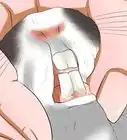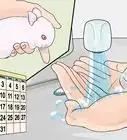This article was co-authored by Pippa Elliott, MRCVS. Dr. Elliott, BVMS, MRCVS is a veterinarian with over 30 years of experience in veterinary surgery and companion animal practice. She graduated from the University of Glasgow in 1987 with a degree in veterinary medicine and surgery. She has worked at the same animal clinic in her hometown for over 20 years.
This article has been viewed 28,873 times.
Fly strike is an unpleasant and potentially deadly condition caused by fly eggs on a rabbit hatching into maggots and eating the rabbit's flesh. There are various factors that can make a rabbit more vulnerable to fly strike. For example, the risk of fly strike is greater in warm or hot weather, when there are more flies around. Knowing all the risk factors and how to assess your rabbit's risks, in addition to monitoring your rabbit's health, can greatly reduce the likelihood that your rabbit gets fly strike.
Steps
Checking For and Treating Fly Strike
-
1Check for fly strike regularly. Every rabbit, healthy or sick, should be checked over twice a day in warm or hot weather to look for fly eggs. This means picking the rabbit up and visually inspecting all areas including between the armpits, groin, under the tail, genital area, dewlaps, skin folds and tail base.
-
2Look for fly eggs or maggots. You should know what you are looking for when checking your rabbit. Fly eggs are pinhead sized white glistening objects. Maggots vary in size from short thread like objects to plumper and worm like objects.Advertisement
-
3Remove eggs or maggots. Wipe away eggs with a clean disposable towel. Immediately remove any maggots with tweezers and then seek veterinary help.
- If the skin is damaged, remove as many of those on the surface as you can and seek urgent veterinary attention for those that have burrowed deeper into the tissue.
- Eggs take a matter of hours to hatch out, so it is possible for a rabbit that was clear at breakfast time, to have fly strike by the evening. This is why it is important to check twice a day.
-
4Take your rabbit to the vet if it has fly strike. This condition needs to be treated quickly and effectively or it could kill your rabbit. In addition to making sure you have thoroughly eliminated all maggots and eggs from your rabbit, your veterinarian will probably prescribe a preventative medicine to stop further infections.
-
5Understand flies and fly strike is in order to avoid it. The fly life cycle involves the adult fly laying eggs. These eggs hatch out into maggots, and these maggots need to feed in order to grow and ultimately hatch out as adults. The maggots normally eat rotting flesh.
- What happens with fly strike in rabbits is that the flies lay eggs in live flesh rather than dead carcasses. The eggs hatch in a matter of hours and the hungry maggots eat through live tissue. This is painful for the rabbit, and if the maggots are not spotted quickly the rabbit can quickly go into shock and die.
- Flies are unlikely to be attracted to really healthy tissue. Problems occur when the flies are attracted to damp skin, an infected area, or an area of skin covered in urine or feces. Thus rabbits with health problems or those kept in poor conditions where their skin is liable to be damaged, are at greatest risk of fly strike.
Preventing Fly Strike
-
1Keep your rabbit's cage clean. Make sure your rabbit's hutch is kept clean at all times. Remove soiled bedding on a daily basis and replace it with clean. If the rabbit uses a litter tray, scoop out the soiled areas daily.
- A common cause of fly strike is that a rabbit has been kept in dirty conditions, with urine stained bedding and lots of pellets. The smell of urine or feces will attract flies to the area. If the rabbit has been sitting in damp bedding, smells of urine, or, worse still, the rabbit's skin is damaged because of urine scald, flies will be even more attracted to the area.[1]
-
2Keep your rabbit's fur clean. Check your rabbit's fur, especially around the anus, to make sure there are no pellets stuck in the fur. This could attract flies.
- If the fur is soiled, tease out the pellets or carefully use scissors to cut the fur away.
-
3Treat health issues that could lead to uncleanliness. There are some health conditions that lead to a greater risk of a rabbit being unclean around its anus. For example, a rabbit with a urinary infection, or a problem with their bladder, may need to pass urine regularly and is more likely to soil themselves. Likewise diarrhea sticks to fur and is a big risk factor.
- For both conditions, always seek veterinary attention. If the rabbit has diarrhea, take it off vegetables and fruit, and feed it mainly hay. However, make sure it actually eats the hay or it may starve itself.[2]
-
4Get dental problems treated. Rabbits with overgrown teeth or dental pain, are not able to groom themselves, and again are prone to soiling around the rear end. It is imperative to seek veterinary attention to get the dental issues corrected. Once the teeth have been filed, then a mainly hay diet is key to keeping the teeth at the correct length.[3]
-
5Check rabbits with physical limitations more often. For example, overweight rabbits are physically unable to bend round and clean the pellets from their rear end. This makes them liable to getting pellets stuck in their fur.[4]
- Key to prevention is keeping the rabbit at a healthy weight by feeding a diet of mostly hay, supplement with fresh vegetables and only a dessertspoon of pellets a day. If your rabbit is already overweight, then it's essential to perform twice daily checks as they are at greater risk of fly strike. Aim to slowly reduce their weight by cutting back on their pellets and switching them onto hay.[5]
- You should also check rabbits with arthritis more often. A stiff arthritic rabbit cannot turn around so easily and is more liable to become soiled. Your vet can supply a painkiller, meloxicam, which is suitable for use in rabbits. This helps ease their discomfort but daily checks are still essential.[6]
-
6Use a product to prevent fly strike. A product called Rearguard stops eggs hatching into maggots and is effective for 8 - 10 weeks. It comes in a one dose applicator and is dabbed onto the fur until it is wet down to the skin. It is then left to dry.
- Rearguard does not repel flies or kill maggots, but it stops any eggs that are laid from hatching into maggots. This product is a tool to help prevent fly strike but it should not replace good clean bedding conditions, regular checks, or attending to your rabbit's health problems.
-
7Repel flies.[7] Do your best to eliminate flies around the rabbit. Invest in a fly zapper, a blue light that attracts flies and then kills them. Alternatively use sticky fly papers, and also keep the rabbit's home clear of food debris that might attract these insects.
Expert Q&A
-
QuestionCan rabbits survive fly strike?
 Pippa Elliott, MRCVSDr. Elliott, BVMS, MRCVS is a veterinarian with over 30 years of experience in veterinary surgery and companion animal practice. She graduated from the University of Glasgow in 1987 with a degree in veterinary medicine and surgery. She has worked at the same animal clinic in her hometown for over 20 years.
Pippa Elliott, MRCVSDr. Elliott, BVMS, MRCVS is a veterinarian with over 30 years of experience in veterinary surgery and companion animal practice. She graduated from the University of Glasgow in 1987 with a degree in veterinary medicine and surgery. She has worked at the same animal clinic in her hometown for over 20 years.
Veterinarian When fly strike is caught early, the maggots can be removed and the rabbit treated for any infection present. However, if the fly strike is advanced and the maggots have eaten into the flesh, the rabbit is likely to be toxic and the outlook is much poorer.
When fly strike is caught early, the maggots can be removed and the rabbit treated for any infection present. However, if the fly strike is advanced and the maggots have eaten into the flesh, the rabbit is likely to be toxic and the outlook is much poorer. -
QuestionHow do you prevent fly strike?
 Pippa Elliott, MRCVSDr. Elliott, BVMS, MRCVS is a veterinarian with over 30 years of experience in veterinary surgery and companion animal practice. She graduated from the University of Glasgow in 1987 with a degree in veterinary medicine and surgery. She has worked at the same animal clinic in her hometown for over 20 years.
Pippa Elliott, MRCVSDr. Elliott, BVMS, MRCVS is a veterinarian with over 30 years of experience in veterinary surgery and companion animal practice. She graduated from the University of Glasgow in 1987 with a degree in veterinary medicine and surgery. She has worked at the same animal clinic in her hometown for over 20 years.
Veterinarian Prevention involves ensuring the rabbit has a clean, dry rear end at all times. Check around the rabbit's rear twice a day and make sure they are housed on clean dry bedding. In addition, there are insect repellents, such as RearGard, which are sponged over the fur to repel flies. However, the latter is no substitute for keeping the rabbit clean at all times.
Prevention involves ensuring the rabbit has a clean, dry rear end at all times. Check around the rabbit's rear twice a day and make sure they are housed on clean dry bedding. In addition, there are insect repellents, such as RearGard, which are sponged over the fur to repel flies. However, the latter is no substitute for keeping the rabbit clean at all times. -
QuestionHow can I keep flies away from my rabbits?
 Pippa Elliott, MRCVSDr. Elliott, BVMS, MRCVS is a veterinarian with over 30 years of experience in veterinary surgery and companion animal practice. She graduated from the University of Glasgow in 1987 with a degree in veterinary medicine and surgery. She has worked at the same animal clinic in her hometown for over 20 years.
Pippa Elliott, MRCVSDr. Elliott, BVMS, MRCVS is a veterinarian with over 30 years of experience in veterinary surgery and companion animal practice. She graduated from the University of Glasgow in 1987 with a degree in veterinary medicine and surgery. She has worked at the same animal clinic in her hometown for over 20 years.
Veterinarian Flies are attracted to urine, feces, and food. Therefore, make sure the rabbit's bedding is clean and dry at all times by spot cleaning daily and changing all of the bedding once a week. Additionally, various fly repellent products are available that you can hang around the cage to repel flies.
Flies are attracted to urine, feces, and food. Therefore, make sure the rabbit's bedding is clean and dry at all times by spot cleaning daily and changing all of the bedding once a week. Additionally, various fly repellent products are available that you can hang around the cage to repel flies.
References
- ↑ http://www.rabbitwelfare.co.uk/pdfs/Flystrikedontgetcaughtout.pdf
- ↑ Textbook of Rabbit Medicine. Frances Harcourt Brown. Publisher: Butterworth-Heinemann
- ↑ Textbook of Rabbit Medicine. Frances Harcourt Brown. Publisher: Butterworth-Heinemann
- ↑ Textbook of Rabbit Medicine. Frances Harcourt Brown. Publisher: Butterworth-Heinemann
- ↑ Textbook of Rabbit Medicine. Frances Harcourt Brown. Publisher: Butterworth-Heinemann
- ↑ Textbook of Rabbit Medicine. Frances Harcourt Brown. Publisher: Butterworth-Heinemann
- ↑ http://www.rabbitwelfare.co.uk/pdfs/Flystrikedontgetcaughtout.pdf
- ↑ https://www.naturallivingideas.com/herbs-that-repel-flies/
- ↑ http://www.mnn.com/your-home/organic-farming-gardening/stories/12-plants-that-repel-unwanted-insects
About This Article
To prevent your rabbit from getting fly strike, check it twice a day during warm and hot weather for fly eggs and maggots. If you find any maggots, you should take your rabbit to the vet immediately, since fly strike can be deadly. In addition to checking it over, you should change your rabbit’s bedding daily, as the smell of urine and feces will attract flies to its cage. If you see flies near the cage, you should try to get rid of them with a fly zapper or fly paper. For more tips from our Veterinary co-author, including how to keep your rabbit’s fur clean, read on!
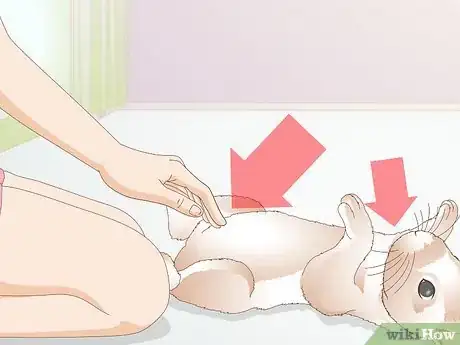
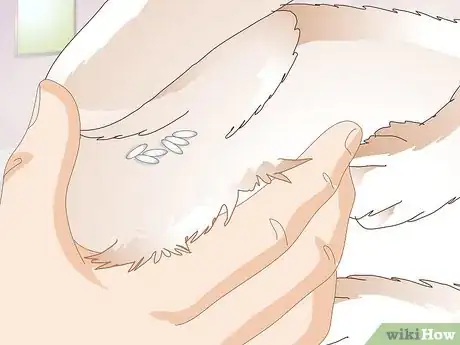
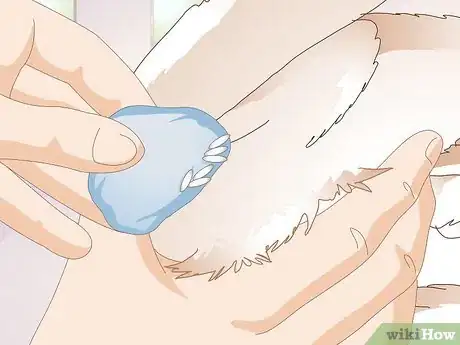
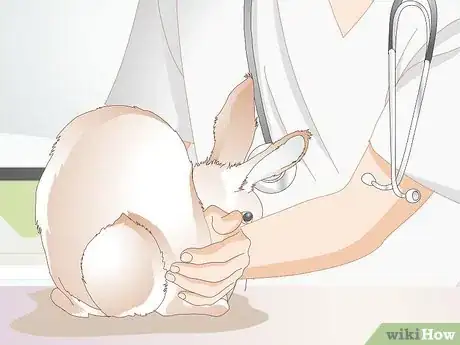
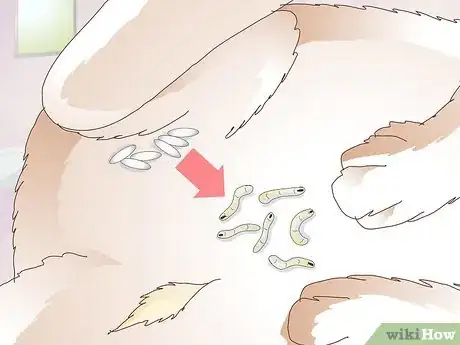
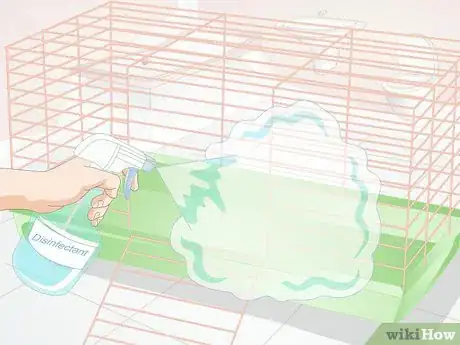
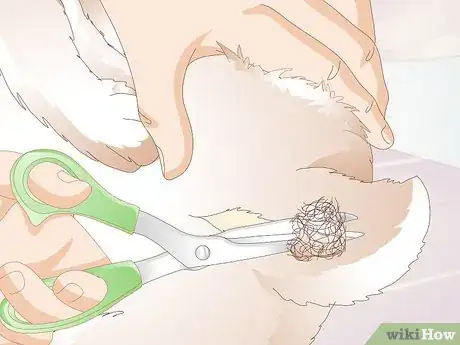
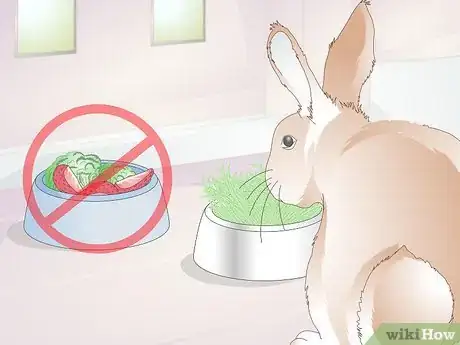
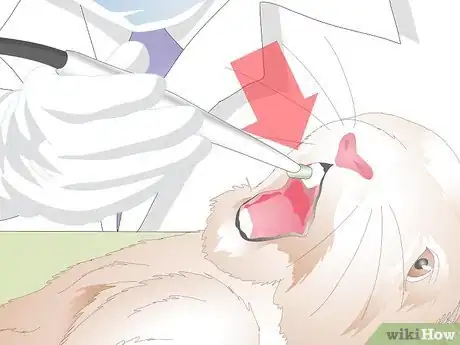
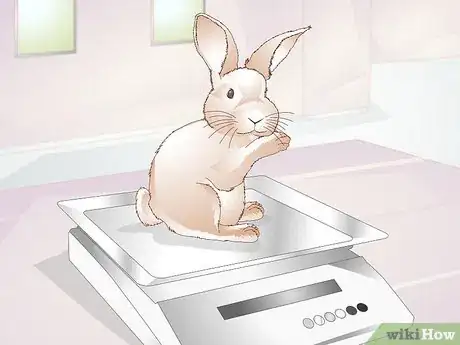
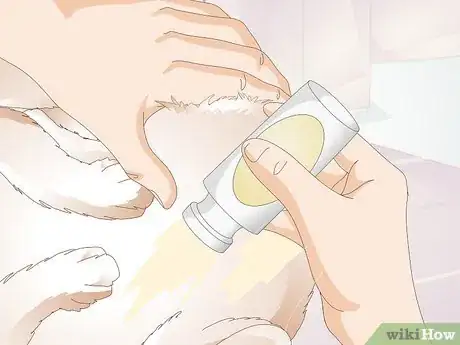
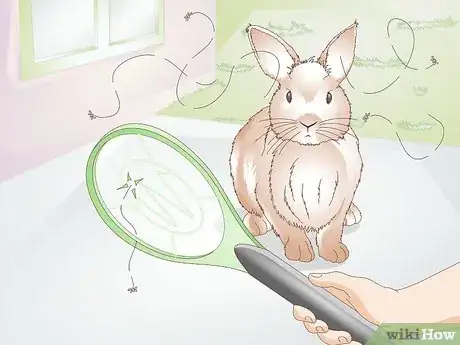

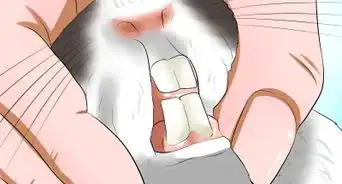
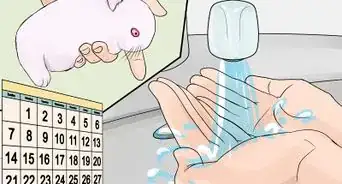
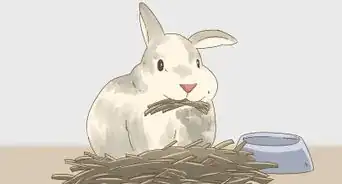
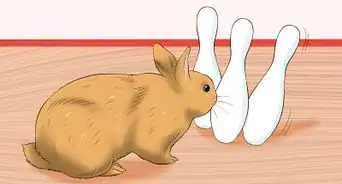
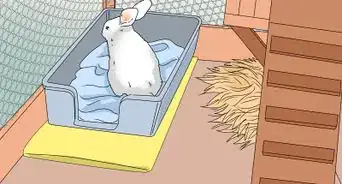
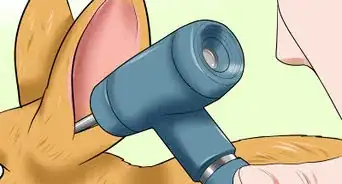
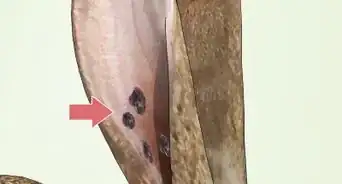
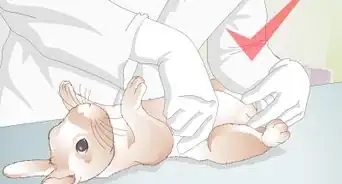
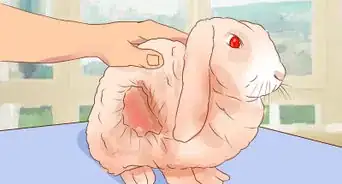


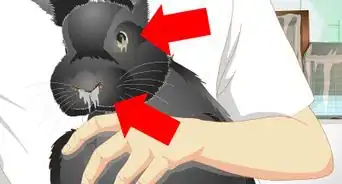
-in-Rabbits-Step-12.webp)









